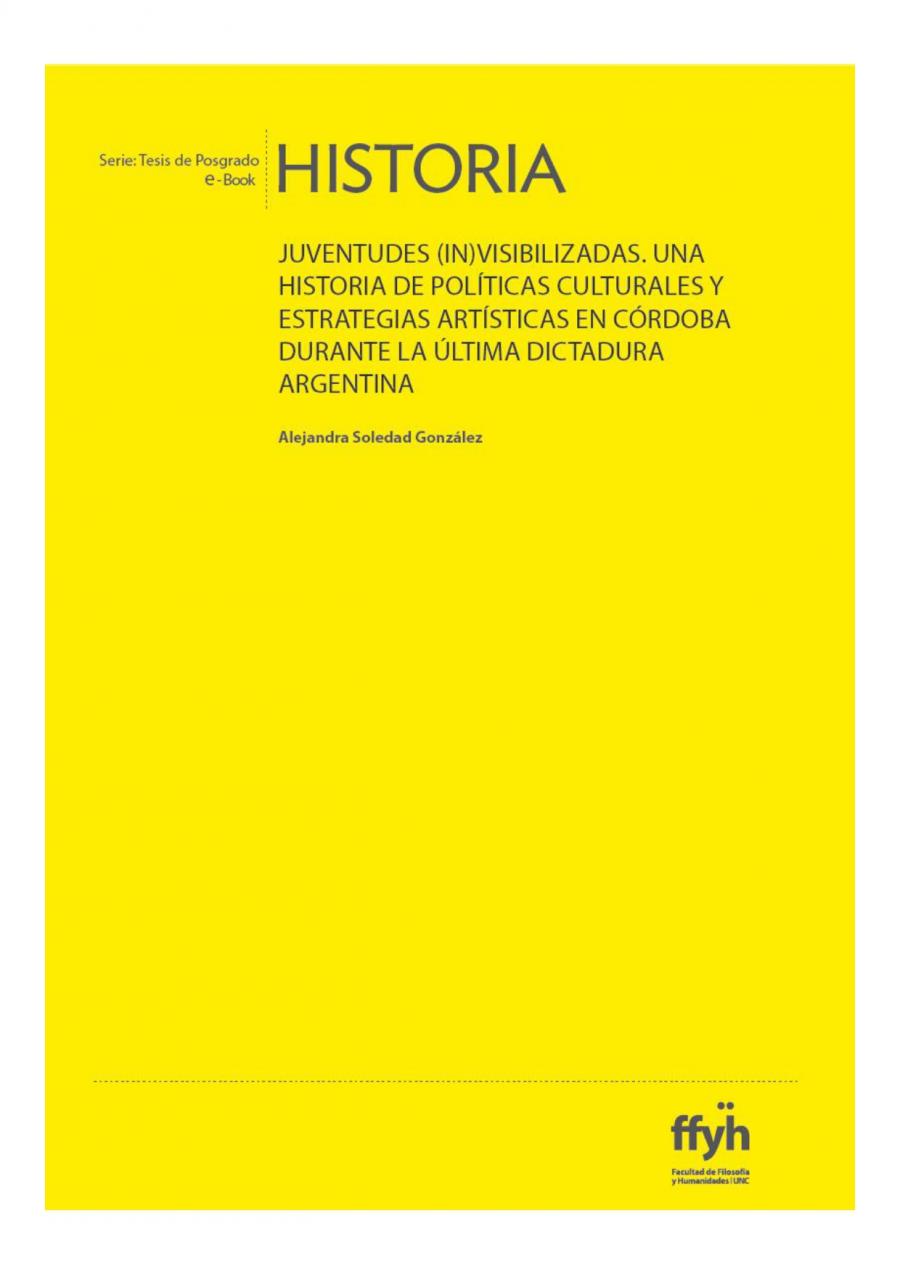(In)visible youth: a history of cultural policies and artistic strategies in Córdoba during the last Argentine dictatorship
Keywords:
Argentine youth - 20th century, Cordoba youth - 20th century, Military dictatorship 1976-1983 - cultural aspects, Cultural policies, Art and politics, Artistic censorship, Youth movements, Human rights, Cultural repression, Cultural resistanceSynopsis
This paper studies some processes of constructing (in)visible youth, which were developed during the last Argentine dictatorship through cultural policies and artistic strategies. It sought to approach the political-social macrocosm and delve deeper into the artistic-plastic microcosm of the city of Córdoba. From a cultural history perspective, four objectives were outlined: 1) to explore representations and biopolitics of youth designed by the state; 2) to understand the meanings acquired by cultural policies dedicated to the world of the visual arts; 3) to investigate two performances with which officials deployed their symbolic power with varying intensity between 1976 and 1983: the celebrations for Youth Day and the ceremonies for the Founding Anniversary of Córdoba; 4) to investigate interstices of resistance, both material and symbolic, where some subjects (self-)identified as young people were able to preserve spaces to exercise freedom of expression. The analysis of written, oral, and visual historical sources corroborated how, between 1980 and 1983, cultural policies proliferated, inaugurating institutions and artistic events where young people in general, and young visual artists in particular, gained prominent visibility. From 1980 onwards, there was a steady increase in local and interprovincial exhibitions, the allocation of studios in neighborhood cultural centers, mural competitions at official festivals, and awards at the Salón and Premio Ciudad de Córdoba. These measures reached their peak in 1982 with the development of a municipal Youth Salon and a collective exhibition of Young Art that brought together more than a hundred works. These policies were supported by an official ideology that defended the existence of an all-out war against communism, which, from their point of view, was being waged on both material and spiritual levels. This, alongside the destructive phase that eliminated those people and ideas considered subversive, a constructive action was developed that proclaimed the reestablishment of a social order based on the values of God, Country, and Family. The year 1980 stands out as a turning point, as the official diagnosis celebrated the armed victory over Marxism but warned of its latent threat on the cultural level. Within this framework, cultural programs focused on the spiritual battle for hearts and minds, especially among young people, were intensified. At the same time, in a context that mixed repression, exceptions, and patronage, some actions by young artists (sometimes in collaboration with other social sectors) contributed creative strategies. Several tensions can be seen in the artistic productions, whose images we reproduce and interpret in this text. From traditional disciplines (drawing, sculpture, engraving, painting) to emerging genres (such as objects and installations), some creators constructed works that, through their themes, styles, titles, techniques, or materials, proposed existences that disrupted the aesthetic and ethical canons that underpinned official taste. At the same time, they reconstructed structures of feelings that reflected their contemporary experiences: uncertainty, violence, confusion, silence, absence, death, madness, and shocked characters and environments.

Downloads
Published
Categories
License

This work is licensed under a Creative Commons Attribution-NonCommercial-ShareAlike 4.0 International License.


